Growing strawberries in containers can be tricky. Strawberry growers often find their potted plants produce fewer berries than plants grown in a raised bed or in the ground. That doesn’t need to be the case with your strawberry container garden though.
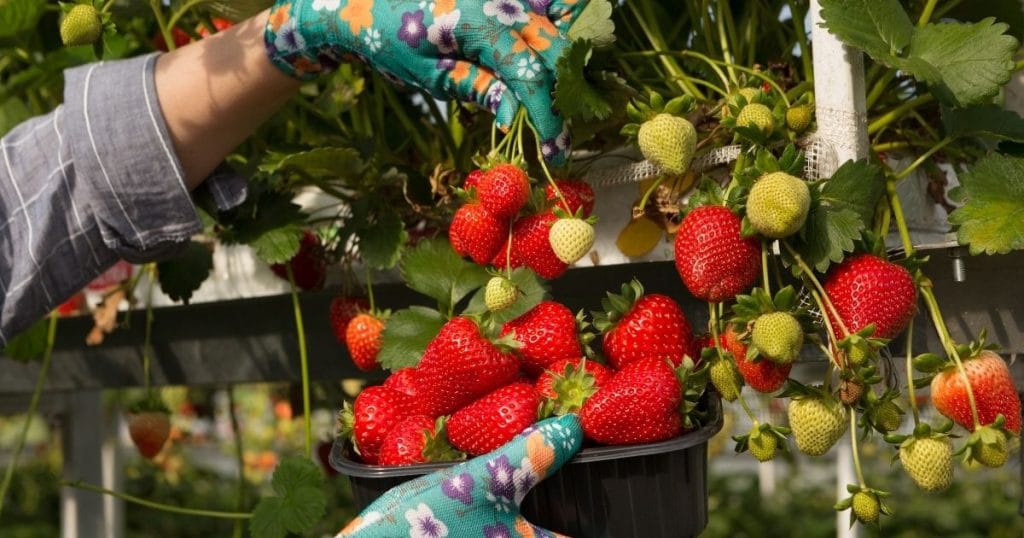
Growing strawberries in pots isn’t any more complicated than growing in the ground, just a little different. Follow these 7 simple principles to have a productive strawberry container garden.
1. Container
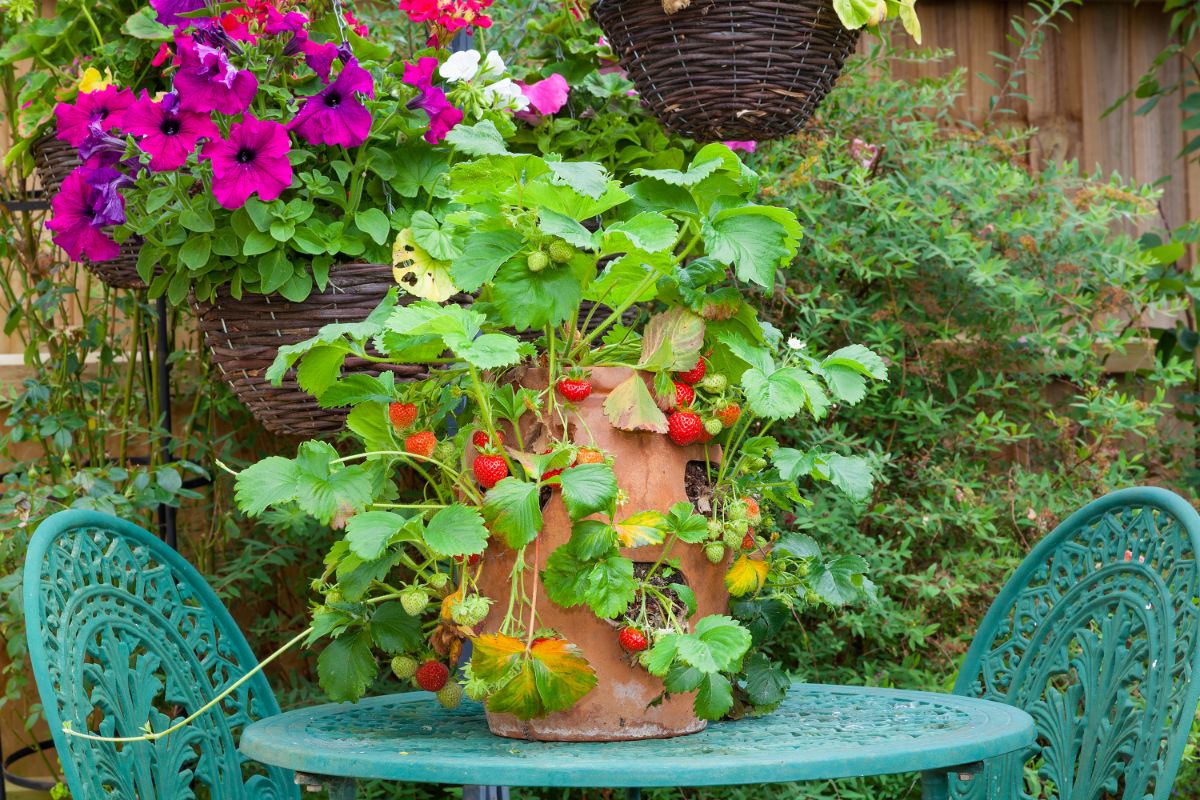
[amazon bestseller=”strawberry container” items=”3″]
Choosing the proper container is the first and most important step to growing healthy, productive strawberry plants. The roots of strawberry plants grow shallow and like evenly moist, well-draining soil.
A good pot will help maintain the proper soil moisture and stabilize the soil temperature over the course of the day. Try one of these 5 pots proven to promote healthy strawberry plants.
2. Variety
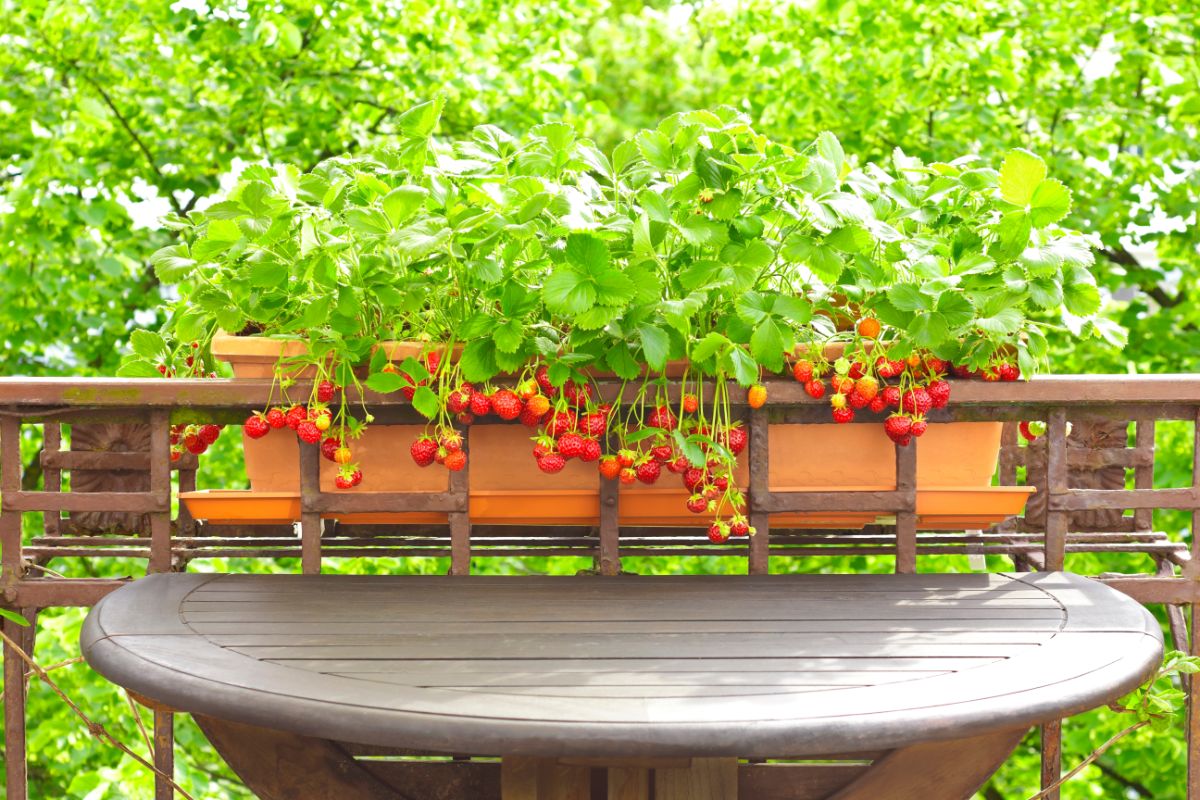
Choose a strawberry varietal best suited for container growing. Ever-bearing strawberry types produce strawberries all season long, are not sensitive to minor temperature fluctuations that a container will amplify, and produce few runners. Alpine strawberry plants are an ever-bearing type that is compact, super sweet, and runner-less. Avoid June-bearing types for your container garden.
3. Crowding
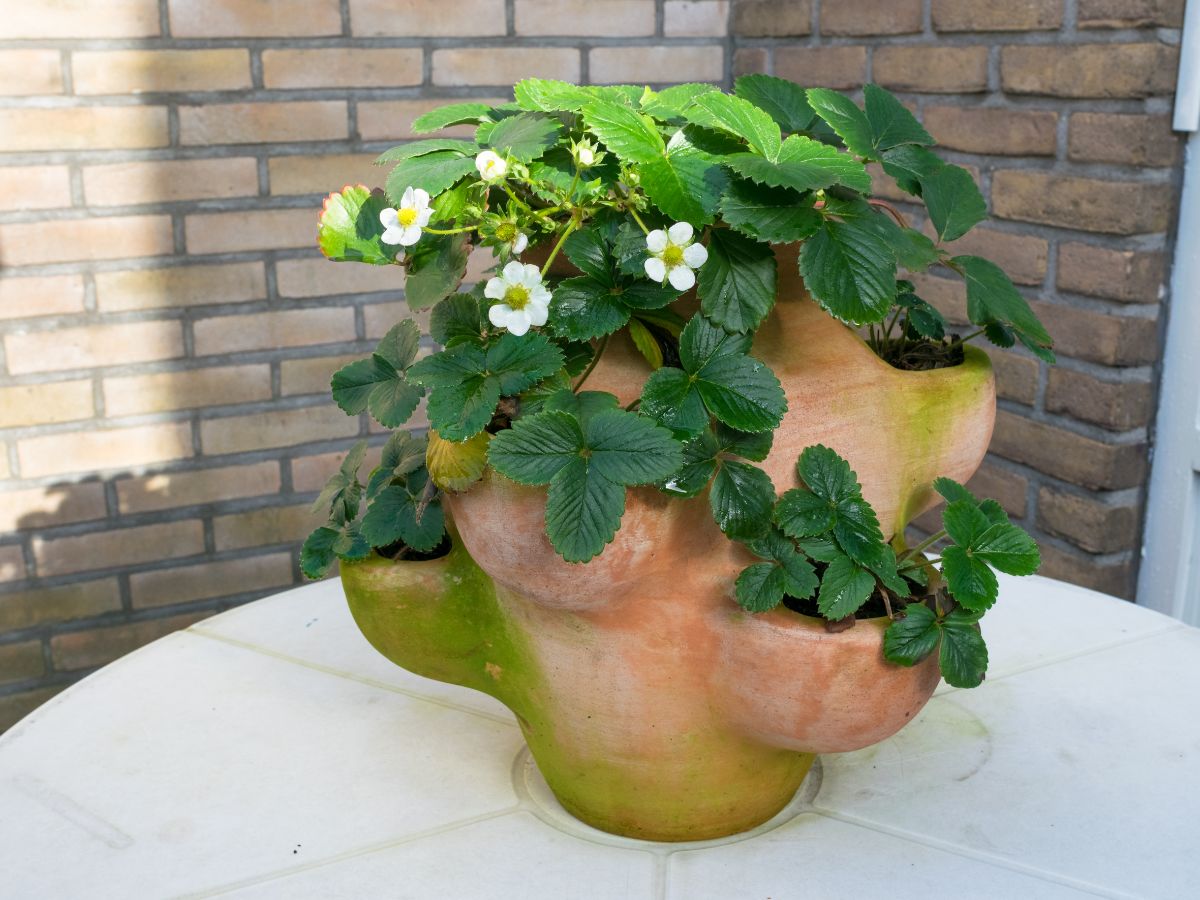
Crowded strawberry plants will not produce a lot of strawberries. Avoid overcrowding the roots of your plants by using a strawberry pot that has separate pockets for each plant.
Otherwise, limit your container to 4 plants per square foot of surface area. You cannot grow more strawberry plants together if you use a deeper pot because strawberry roots grow close to the surface.
4. Runners
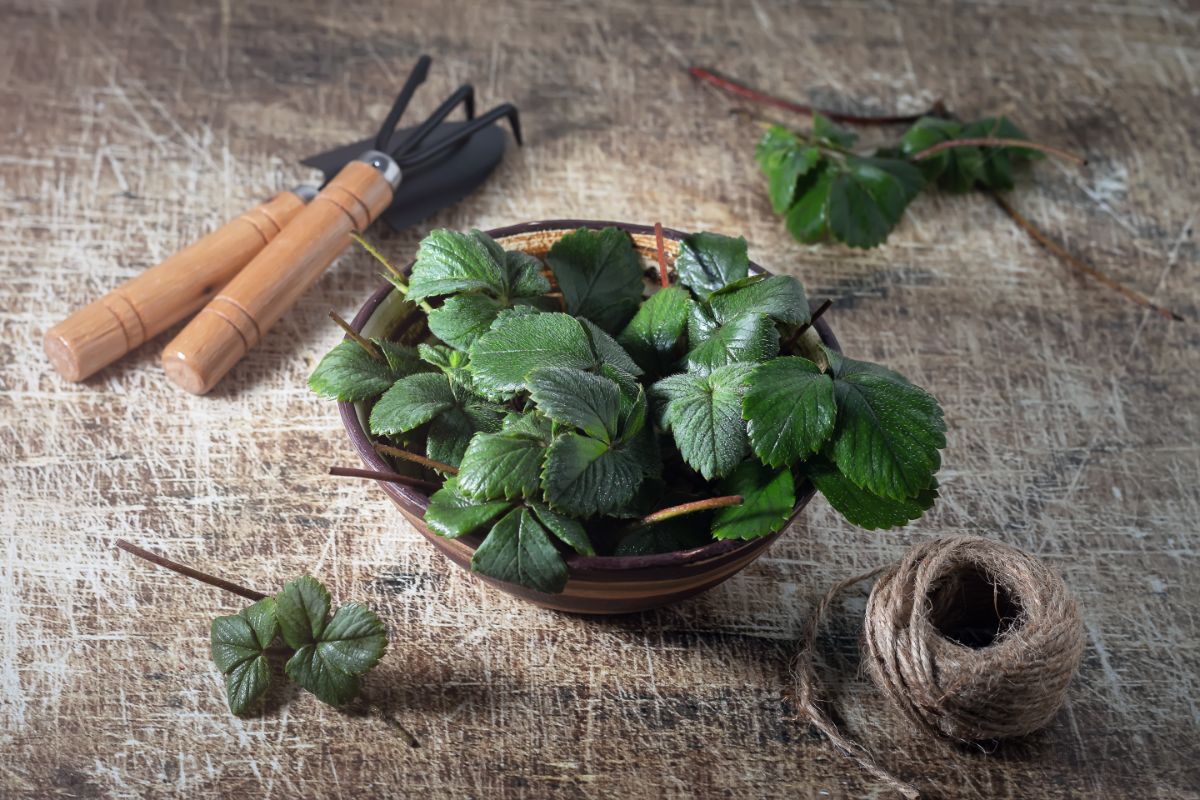
Though some choose not to, most strawberry gardeners snip off the runners to encourage increased berry production. It is especially important to snip off runners from strawberry plants growing in containers because there is nowhere for them to root and they will continue to feed off of the mother plant. You can start new plants from the runners you remove if you wish but don’t let them interfere with your harvest.
5. Watering
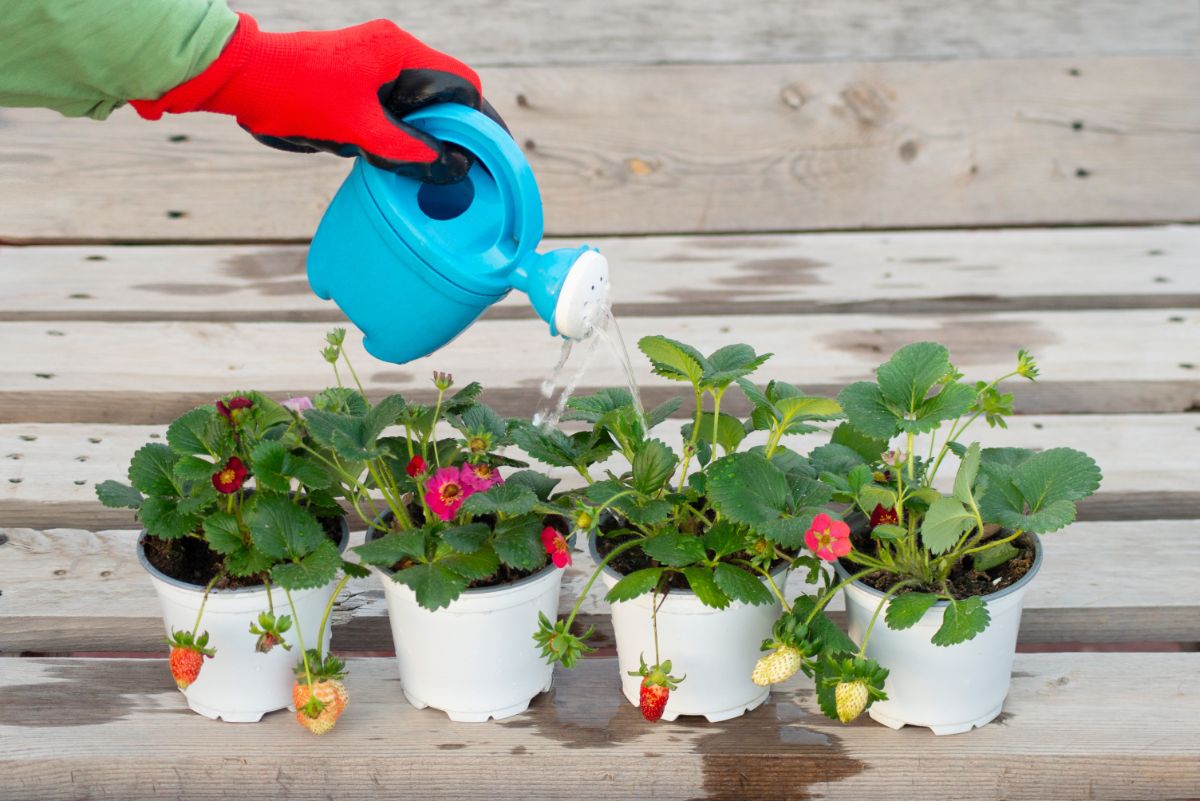
The principle of watering your strawberry plants remains the same as watering strawberries in the ground. Water enough to saturate the soil and allow it to drain completely before watering again.
A pot holds a lot less soil, and therefore less water, than the ground so water your potted strawberries more frequently but not as deeply. The soil should feel damp just below the surface within 3-4 days after watering.
6. Fertilizing
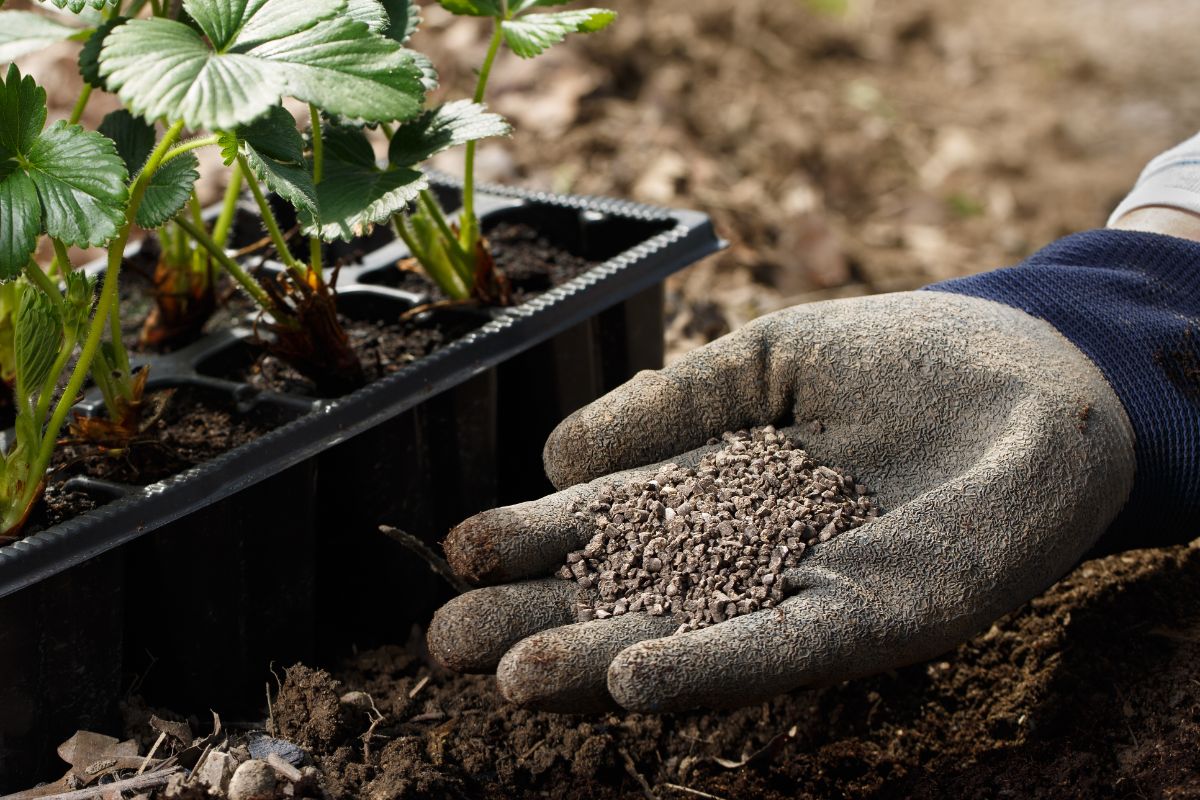
[amazon bestseller=”strawberry fertilizer” items=”3″]
Don’t forget to fertilize your potted strawberry plants! You should first mix fertilizer with the soil when potting. Then supply fertilizer every 2-4 weeks after flowering starts until the plants begin to go dormant. Yes, continue to fertilize your strawberry plants after the harvest is over so you’ll get a lot of fruit next year.
7. Insulating
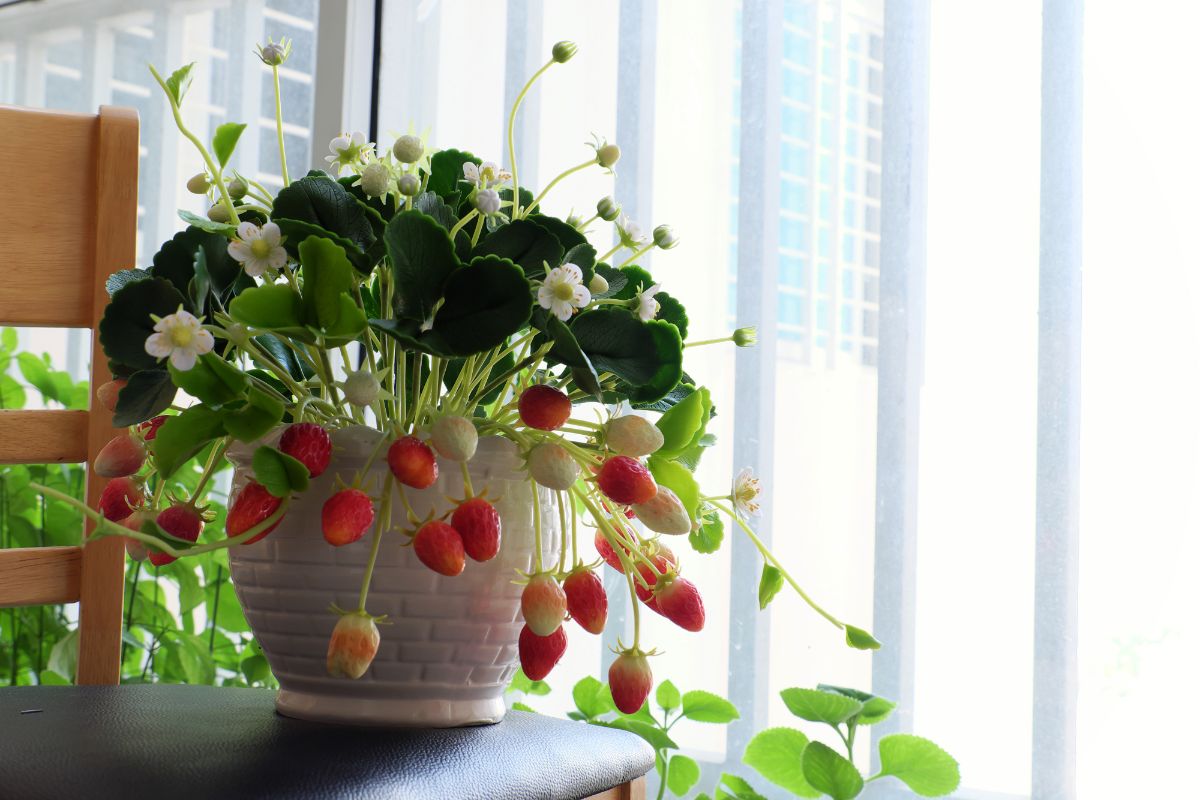
Strawberries grown in pots need protection from the elements because their soil is more susceptible to temperature fluctuations. In mild climates, move the pots closer to your house for warmth during the winter. In harsh climates, move your pots into a building, bury them, or wrap them in blankets or straw to minimize the shock from extreme temperature changes.
For a more detailed explanation of why these tips work, visit Growing Strawberries in Containers.









Leave a Reply